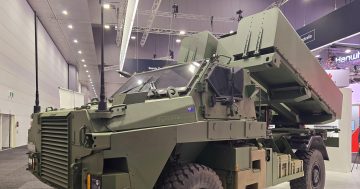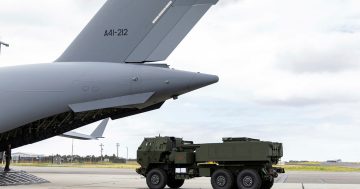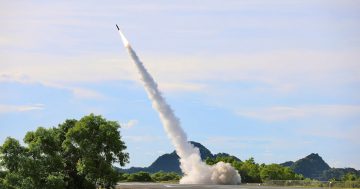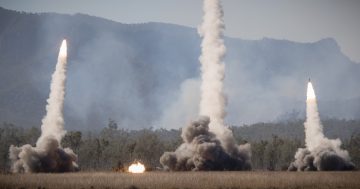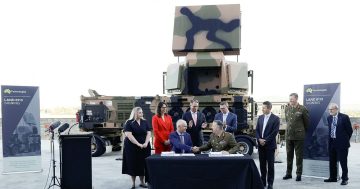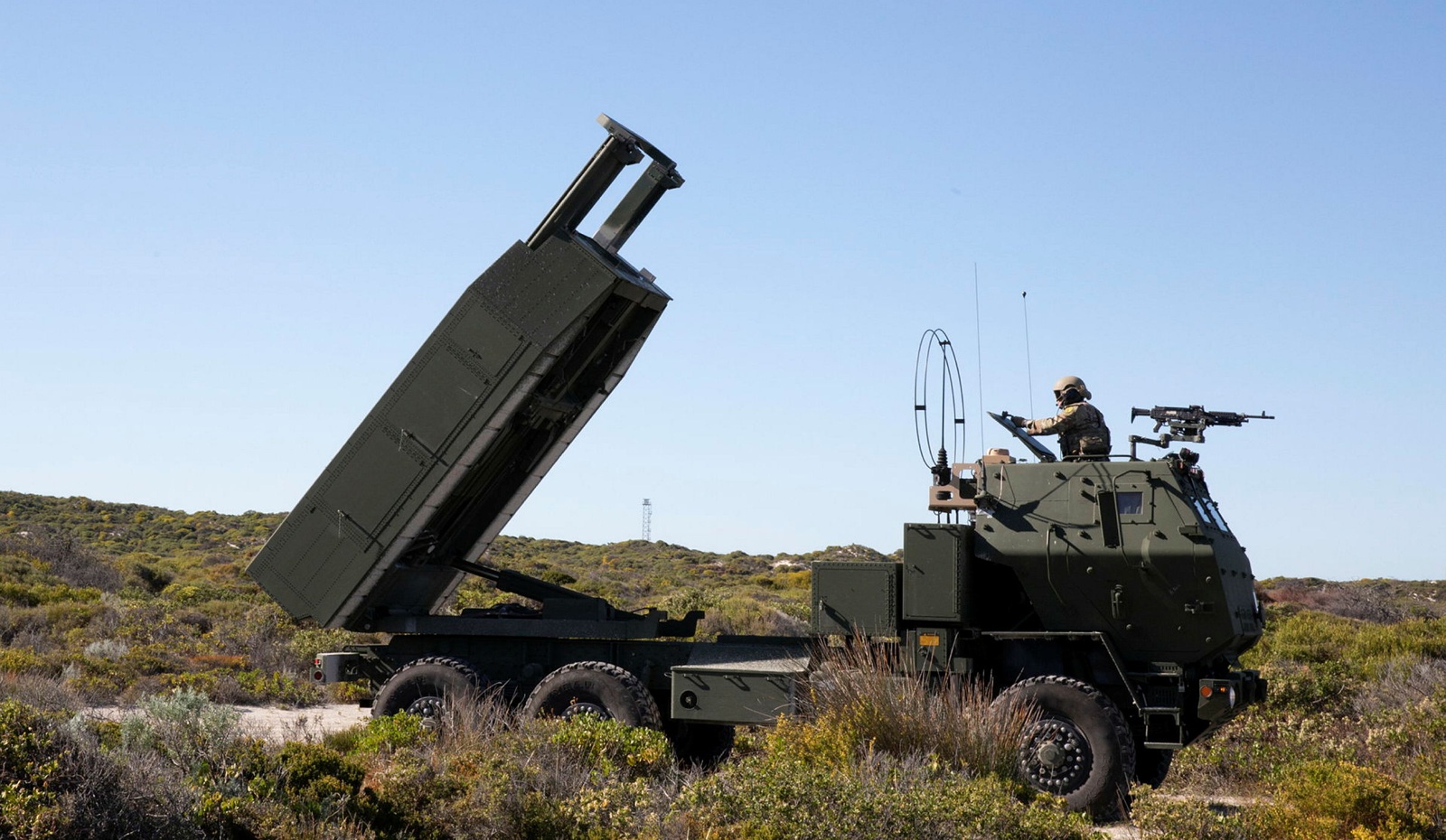
The M142 HIMARS is capable of launching six GLMRS or two PrSM missiles. Photo: ADF.
The US State Department has approved the possible sale of 48 HIMARS missile launch vehicles to Australia at a cost of US$705 million (A$1.07bn).
Notifications by the Defense Security Cooperation Agency (DSCA) indicate a request for equipment of US origin has been made and approved, but is not yet under contract or on order.
The timing of the notification suggests the government will soon announce it has selected the M142 High Mobility Artillery Rocket Systems (HIMARS) to fulfil some or all of Defence’s Project LAND 8113 Phase 2 land-based maritime strike (LBMS) requirement to provide a long-range anti-ship missile capability to the Australian Army.
The Army has previously ordered 42 HIMARS systems for its Project LAND 8113 Phase 2 long-range precision strike requirements, and the first of these systems was delivered to Australia in March.
HIMARS can fire six Guided Multiple Launch Rocket System (GMLRS) rockets or two larger Precision Strike Missiles (PrSM). The PrSM will soon be available in four variants.
The Increment I PrSM is the land attack version, the first of which was test fired by an Australian HIMARS at August’s Talisman Saber exercise. Increment II is currently under a cooperative development program between the Australian and US armies, and will add a dual-mode seeker capable of striking moving targets such as ships at sea. Increments III and IV will add additional range up to 1000 km, and more warhead options.
It is the Increment II version of the PrSM combined with HIMARS which was shortlisted for LAND 8113 Phase 2 by the Army last December, along with the Australian-developed Strikemaster which combines the Thales Bushmaster vehicle with a pair of canister-launched Kongsberg Naval Strike Missiles (NSM). Importantly, both systems are air-deployable and, being vehicle-borne, are mobile.
The DSCA notification offers no clues as to whether the HIMARS will utilise the GLMRS or the PrSM, as those missiles are ordered through the US Army and DSCA systems separately.
It says the request includes 48 M142 HIMARS vehicles, as well as M1084A2 HIMARS resupply vehicles, M1095 trailers, low cost reduced range practice rocket (LCRRPR) pods, communications systems, and spare parts and services, as well as the usual US Government contracting, engineering, logistics and other associated extra costs.
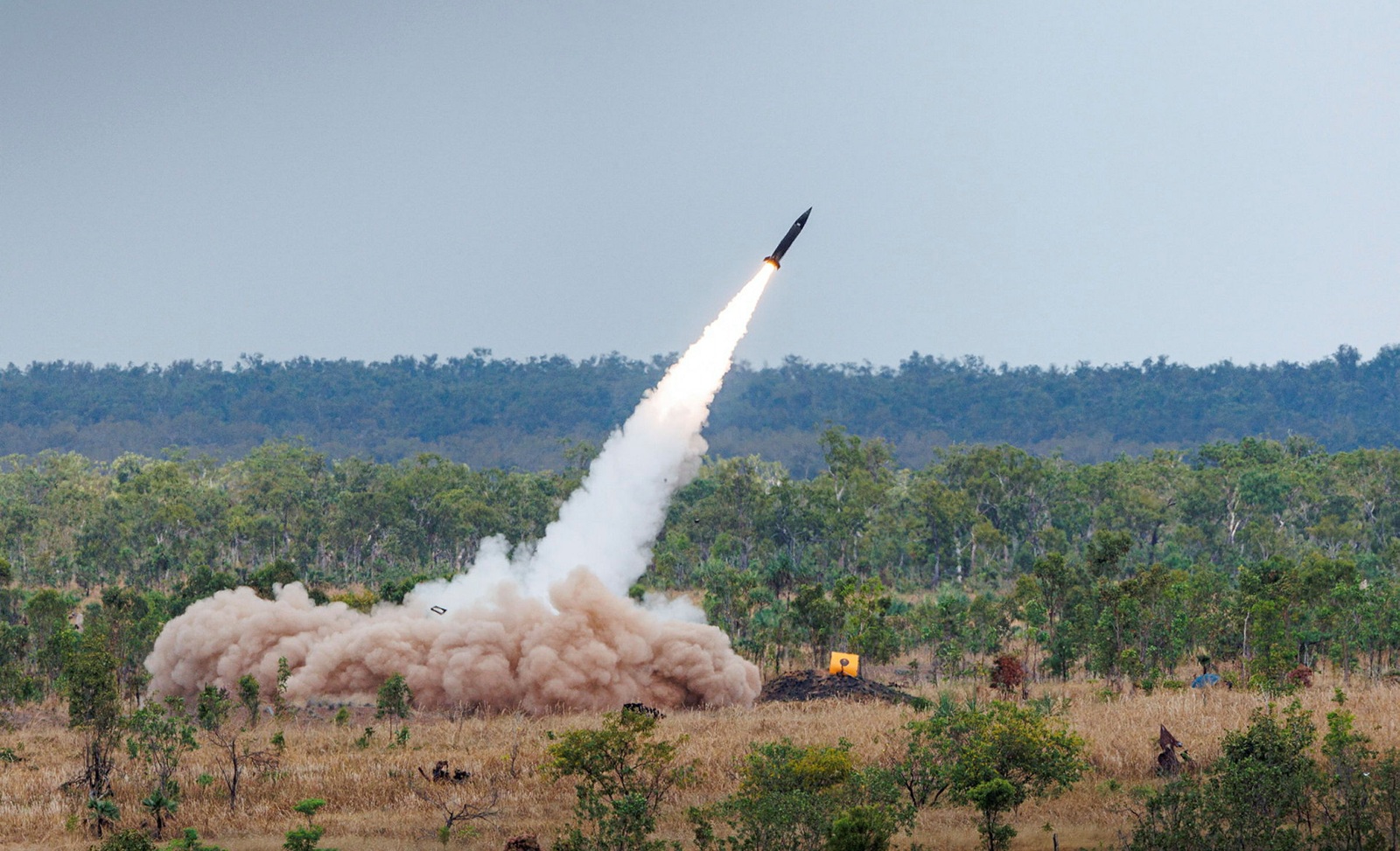
The first launch of a PrSM from an Australian HIMARS was conducted at August’s Exercise Talisman Sabre. Photo: ADF.
Region understands a decision on LAND 8113 Phase 2 is due to be announced before the end of the year, with one credible source telling us they believed it was imminent.
Other sources have suggested both of the shortlisted systems might be acquired, as they offer distinctly different capabilities and attack profiles for the anti-ship mission.
The PrSM Inc II has a range of 500 km, and flies a near-ballistic trajectory to come down on its target from height, whereas the NSM has a range of about 300 km and flies at a lower altitude to the target while jinking and avoiding islands or land masse obstructions, and tends to hit its target at a more horizontal angle.
Both attack profiles have their advantages and can effectively be used together to attack a target from multiple altitudes, speeds and vectors.


